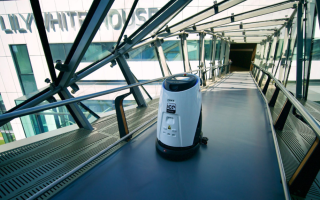Bullying at work can impact your life both professionally and personally. It can affect your emotional and mental health. We all instinctively recognise it in our memories of schooldays or other peer groups. As a first step to keeping the workplace free of bullying, we need to know how to spot it, before taking action.
According to ACAS, there’s no legal definition of bullying, but it might be summarised as unwanted treatment by a person or group that is intended to offend or intimidate; or a misuse of power that causes harm. Bullying takes many forms. It can take place in person or online, regularly or as a one-off, and it’s not always noticeable to others.
Most of us can intuit what bullying looks and feels like. It might be inappropriate remarks or put-downs, perhaps in meetings, emails, or on social media. A malicious rumour, or intimidation of some kind.
Samsic’s Mental Health Champion Leisa Curry notes: “Bullying can grow from what’s perceived as an imbalance of power towards another person, used in the negative. This can be physical, verbal or anti-social in some way, but also actively excluding someone can also be seen as bullying.”
More subtle forms of bullying
The issue becomes more difficult to recognise when someone isn’t aware that their treatment of another person might constitute bullying. What starts as something, apparently, harmless can become malevolent, if left unchecked.
“Bullying isn’t always the extreme behaviour we think,” says Leisa Curry. “Sometimes light-hearted banter can be perceived as inappropriate when the recipient tells you verbally or via body language they are not OK with it, and this is your cue to stop.”
Leisa also advises us to be aware of joking with or teasing another person in ways that could hurt them, however innocently meant. They might not be able to make their feelings known, because the recipient might struggle to articulate how the treatment is hurtful, or simply lack the confidence to speak up.
“When the recipient seems to be OK with it, it may be they are actually not,” warns Leisa. “But they may not feel they can verbally tell you. They may even laugh along with you, so as not to bring more attention to themselves. This doesn’t necessarily mean that they are not hurt by it.”
We must also keep in mind that a third party witnessing an exchange between other people might view the exchange as offensive, for example someone overhearing a comment made from one colleague to another. Even if the person on the receiving end of the comment seems unaffected by it, the witness could still report it as a grievance.
Of course, bullying can come from someone more senior, by using their authority inappropriately or it can also come from those of equivalent or lower position, undermining a person’s authority or showing disrespect.
How to take action if you suspect workplace bullying
ACAS offers helpful guidance on what to do if you think you might be a victim of bullying. A good first step is to speak to bully privately. Aim to be firm rather than aggressive, explaining how their behaviour makes you feel.
But keep to the facts. It might be a good idea to keep a record of each incident. Note down what happened, your feelings at the time, along with any evidence (e.g. emails, screenshots) or witnesses.
If you don’t feel comfortable with a face-to-face conversation, communicate it by email or speak to a colleague you can trust. That might be your line manager, a mental health or welfare representative or counsellor, your HR department, or a trade union representative if you have one.
ACAS is clear on your employers’ obligations, too: “Your organisation should have a policy on bullying that says how it should be handled. Even if there’s no policy, your employer has a legal duty of care to protect you while you’re at work. This includes dealing with bullying issues.”
Samsic employees can refer to our company handbook, and in particular our Bullying, Harassment and Inappropriate Behaviour Policy. They can also speak to a member of the HR team.
Besides, you can seek guidance on more specific forms of bullying such as harassment, victimisation or discrimination. These are directly linked to protected characteristics such as age, gender, sexuality, race or other categories.
An anti-bullying mindset
Leisa’s advice is to develop an intuition for spotting what could amount to bullying in the workplace. To help us do this, we must try to keep in mind the consequences of malicious behaviour towards others.










